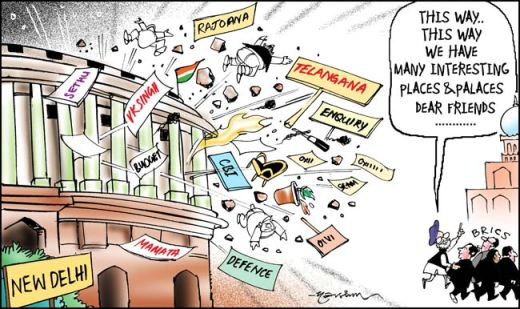| Loksabha |
Rajyasabha |
| Lower house of India’s Bicameral-Parliament |
Upper house of the Parliament of India |
| 552 Members(530 from states+20 from UT + 2 Anglo Indians nominated by President) |
Maximum of 250 members |
| Representatives of the people from 543 constituencies, chosen by direct election on the basis of adult suffrage |
Elected by state & UT using single transferable votes, while the President of India can appoint 12 members for their contributions to art, literature, science, and social services |
| Tenure 5 years can be extended for 1 year during emergency |
Not subject to dissolution, 1/3 rd members retire every year |
| Tenure 5 years can be extended for 1 year during emergency |
Not subject to dissolution, 1/3 rd members retire every year |
| Defined under Article 79 of constitution |
Defined under Article 79 of constitution |
|
Vice President is the exofficio chairman |
| constituted in 1952 after the General Elections |
came into being in 1919, under the Government of India Act, 1919 |
| power to introduce the budget of the country |
No such power with RS |
| control on the ministers through various motion such as no confidence motion, censure motion, question hour, adjournment motion etc |
Rajya Sabha cannot pass any such motion. It exercises control on them by means of questions, debates and discussions. |
| power to introduce the budget of the country |
No such power with RS |
| Eligibility 25 yrs |
Member should be 30 years of age |
| Money bills can only be introduced in Lok Sabha. After that, it is passed to the Rajya Sabha for consideration. |
Member should be 30 years of age |














The approval of RS is necessary to legislate any State subject or to create a new All India Services.
A resolution for the removal of the Vice President can only be initiated in RS.
Under art 312, the RS can authorize the Parliament to create or abolish an All India Service.
Nice about Loksabha & Rajya sabha